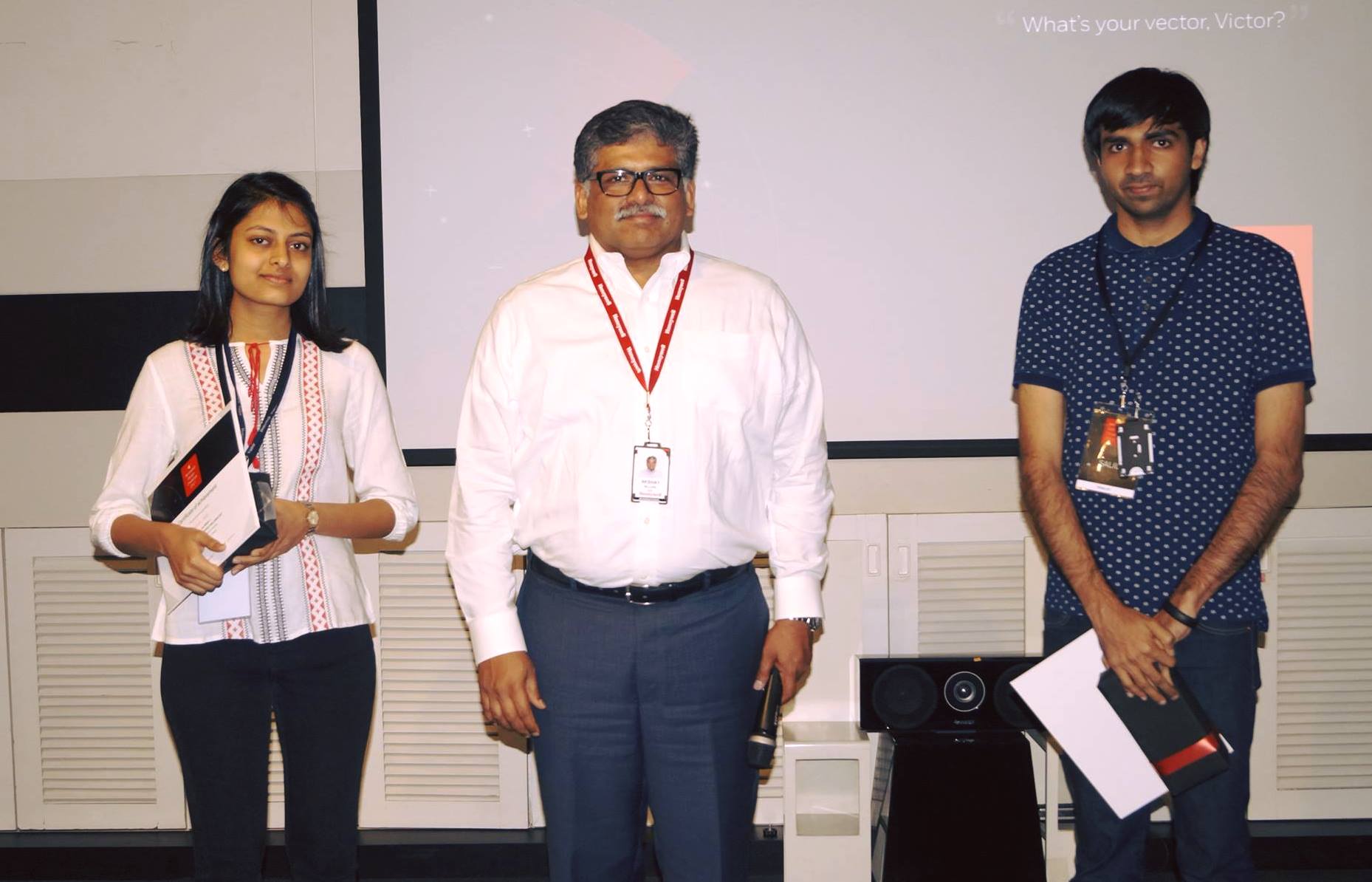Honeywell Aerospace Design Challenge
Overview
Proposing solutions for enhancing situational awareness for both pilots and air traffic controllers. Runners up entry for the Honeywell Aerospace Design Challenge.
People
The Honeywell Aerospace Design Challenge is an annual competition hosted by Honeywell Aerospace India. My collaborator, Harshika Jain and I have been participating for 3 years now, and in 2017 we got to the final round of the competition after previously being named as a special mention. I’ve always loved airplanes, and I really appreciated the chance to participate in a competition to see if my ideas have potential to make an impact.
Project proposal video
The theme for the 2017 edition was to come up with solutions to increase situational awareness of both pilots and ATC controllers. To understand the status quo, and the solutions currently being used, we interviewed multiple pilots and visited ATC controllers in the tower at the Ahmedabad Airport and the International Airport in Delhi. After our research, we designed two solutions to help increase situational awareness. The first part of the solution was to enhance the visualisation capabilities of ATC controllers, reducing their cognitive workload, stress levels, and give them the ability to make smarter decisions. Area ATC controllers (who control general airspace) would use a gesture controlled 3D map of the airspace to accurately determine distances and spot conflicts long before they occur. Tower and Ground ATC controllers (who control the airspace around the airport and on the airport) would have access to infrared capable cameras for better visualisation of the spaces they control. These solutions were driven from studying reports of various incidents and accidents to understand how a lack of situational awareness lead to these events taking place.
The second part of the solution proposed a rapid voice-text-speech solution which would reduce the chances of miscommunication on radio frequencies. When we pored over hours of ATC-Pilot communications, and listened to tens of hours of conversations on frequency, along with pilot testaments, we narrowed in on the problem of radio interference, accents, and grammar affecting communication, which often led to close calls or accidents. Building on current technologies and projecting into the future of voice-text-speech solutions to propose a concept which would dramatically reduce miscommunication on radio. When the pilot, or ATC controller would make a statement on their radio, the onboard computer would transcribe their messages to text via a highly adaptable machine learning algorithm. This text would be sent to the recipient and be heard as a voice message. The transcription would not only transcribe the message, but attempt to normalise the message to a standardised format easily recognisable world over. This helps in situations where foreign pilots interact with ATC controllers in different country. Even though the format of communicating over radio is highly standardised, strong accents combined with radio interference can lead to miscommunication. Some areas have also evolved and adapted different ways of communicating the same messages, especially in areas with extreme terrain, and this may differ from the standardised message format. This solution hopes to reduce the adverse impact of these factors.


Our proposal
Even though we finished runners-up in the final round, our solutions were highly appreciated by the senior engineering team at Honeywell.
